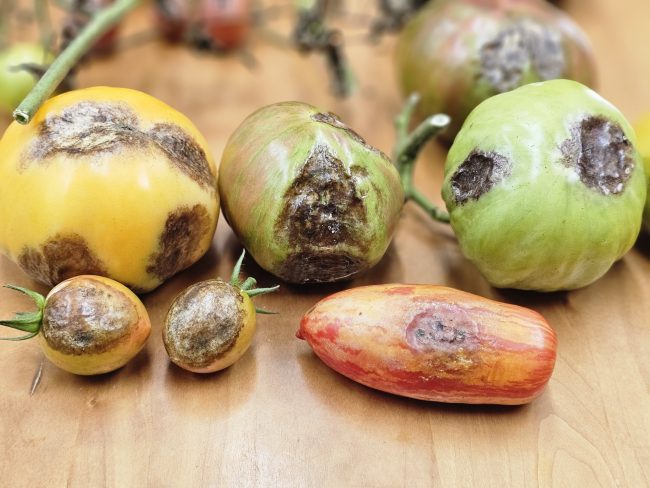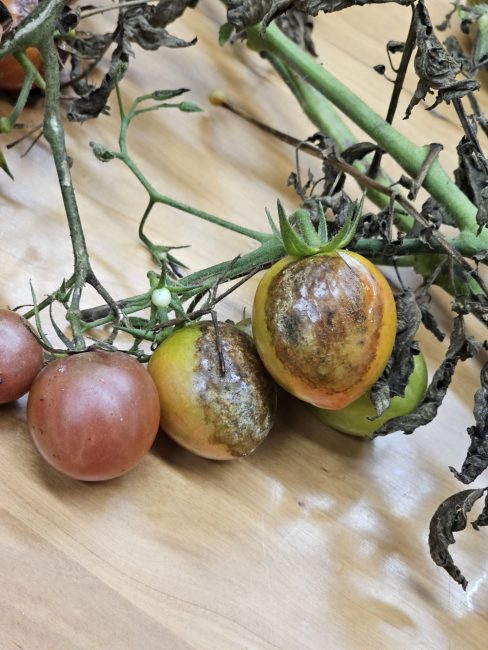
Tomato late blight was confirmed this week on foliar and fruit tissues from a plant sample submitted from the western edge of Dane County. This is the first confirmation of late blight on tomato or potato in Wisconsin for 2024. Originally the late blight was thought to be a possible sunscald as the symptoms on tomato fruit can appear to be dark brown, sunken, and ‘dry’ under some conditions. The tell-tale sign of late blight is the white sporulation growing in some areas of the lesions. Read more about late blight here.

What can be done about it:
It is imperative to stop the pathogen from sporulating to reduce further spread and crop damage. To do this on small scale, infected tomato plants can be cut at soil line and placed into black plastic bags, tied, and left in the sun. This will solarize and kill the plant tissues and associated late blight pathogen. The bags can then be included with garbage for disposal to a landfill. Other options including removing the infected plants and plant parts and burning or burying in areas unintended for future garden or ag production.
For gardeners and commercial vegetable producers in Dane and Iowa Counties, this finding indicates an imminent risk to tomatoes and potatoes in your growing area. But for a few cultivars with some resistance, all tomato and potato cultivars are susceptible to the prevailing strain type of the late blight pathogen (Phytophthora infestans US-23). It is critical to protect your plants with fungicides with known effectiveness in managing this highly devastating disease.




